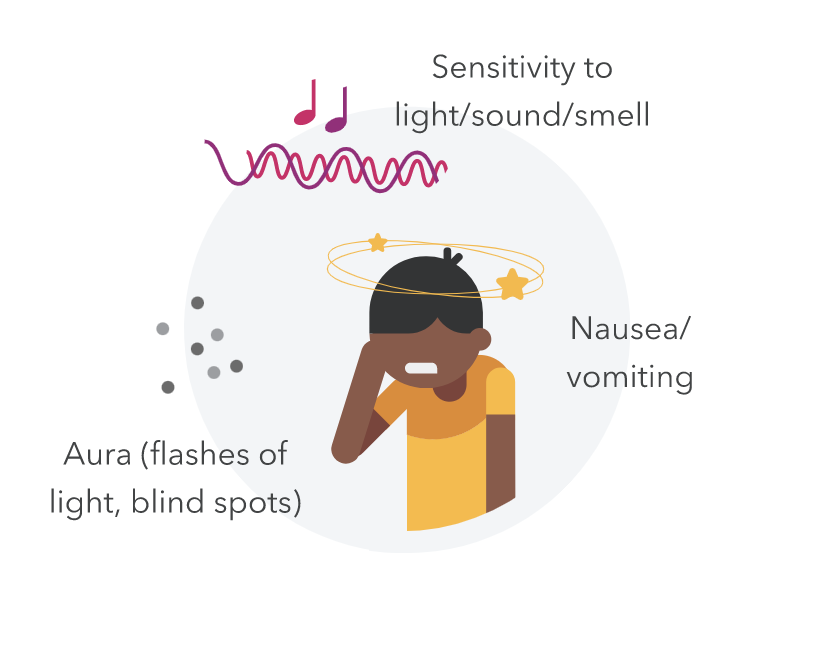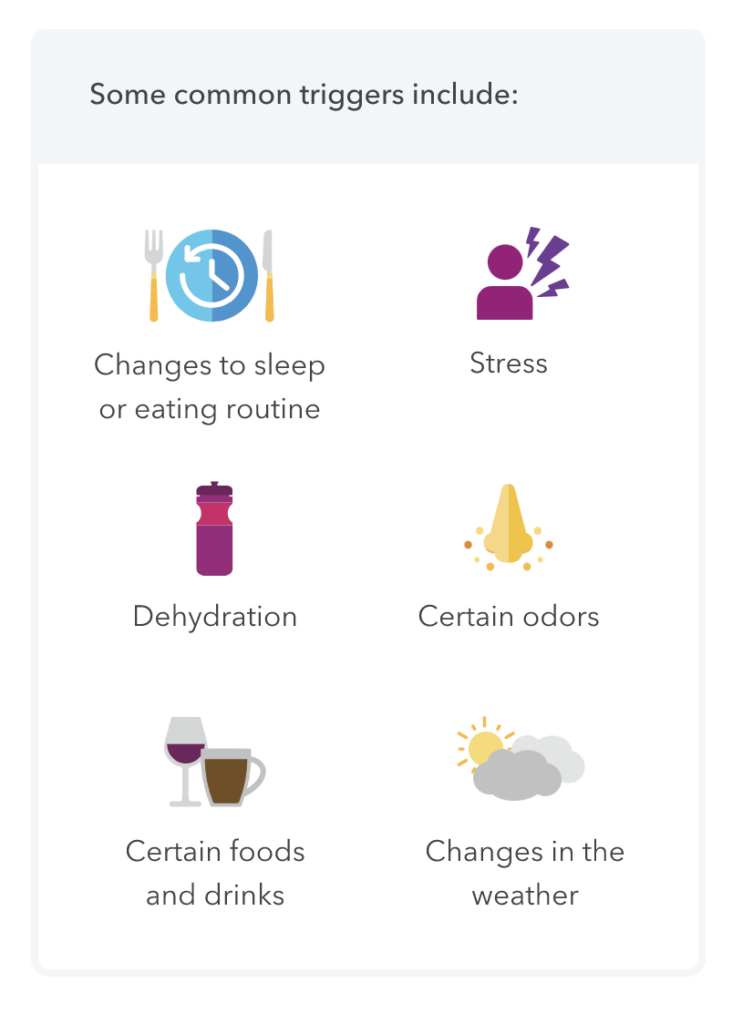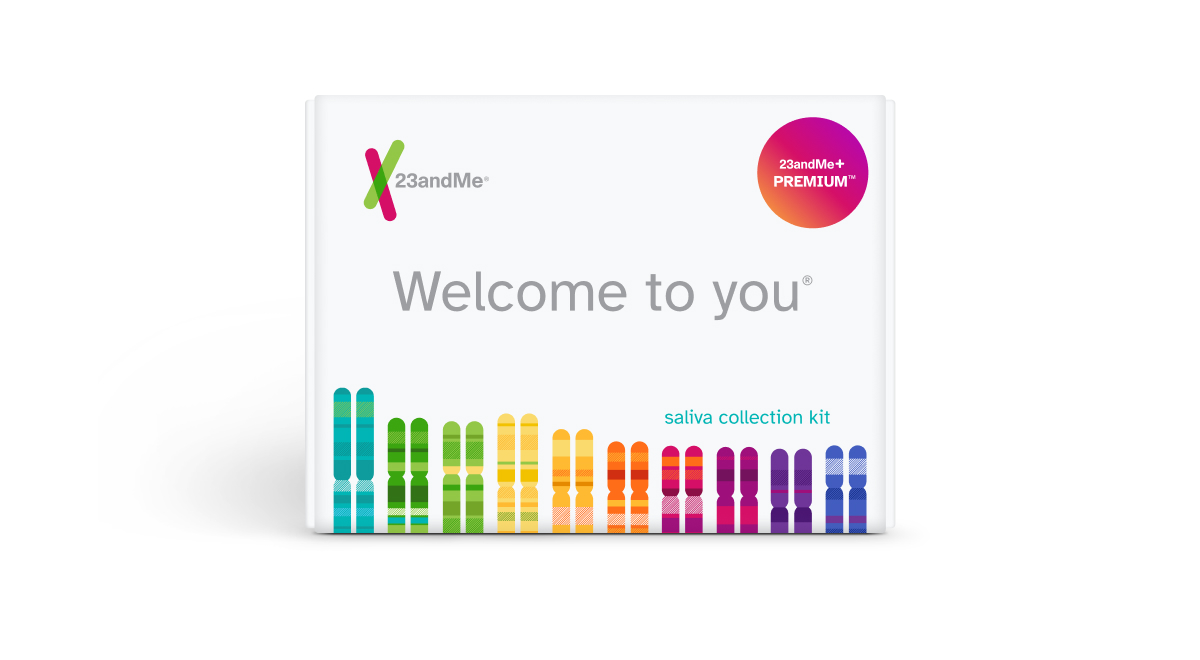Are Migraine Headaches Genetic?Explore Migraine Headaches and what your DNA can tell you
What are migraine headaches?
Migraine is a condition that causes moderate to severe headaches. Some people with migraine experience sensory disturbances, including flashes of lights and temporary blind spots before or during a migraine headache. Other symptoms can include nausea, vomiting, and extreme sensitivity to light and sound.

What are migraine triggers?
For people who experience migraine headaches, certain factors can increase the chances of an attack, depending on the person. Changes to a regular sleeping or eating routine, changes in the weather, and stress can trigger a migraine. Other common triggers include dehydration, certain foods and drinks, and even certain odors.

Are migraines genetic?
It’s not completely understood what causes migraine, but along with environmental factors, genetics appear to play a role. If one of your family members has migraine, you have an increased chance of developing it too.
Find out how genetic testing for migraines works.
Did you know?
Other than family history, your age and sex can also impact your chances of developing migraine. Often the condition begins at a young age. The most severe migraine headaches typically occur in a person’s 30s but luckily, they can become less frequent and less severe with age.
In terms of sex, females are more likely to have migraine. Hormonal changes, particularly during menstruation, can trigger a migraine headache for some.
Find out if your genetics might increase your likelihood of developing mirgraines
Interested in learning how your genetics may be related to migraine? You can get the Migraine report (Powered by 23andMe Research) through the 23andMe+ Premium membership. 23andMe+ Premium includes everything in our Health + Ancestry Service plus new premium reports and features throughout the year.

23andMe+ Premium
Please note:
- The Migraine report does not diagnose migraine and should not be used to make medical decisions.
- The report was developed by 23andMe scientists using data and insights gathered from thousands of customers who consent to participate in our research. Reports based on 23andMe research provide an estimate of your likelihood of developing a condition based on your genetics and other factors. This report does not account for lifestyle or family history.
- The report does not account for every possible genetic variant that could affect your likelihood of developing migraine.
References